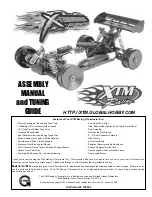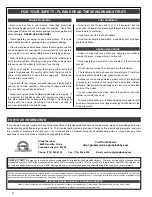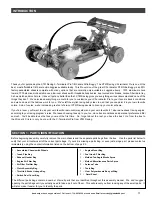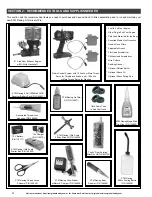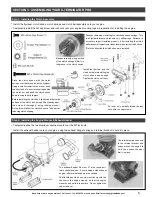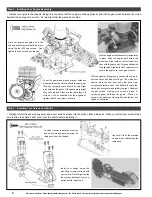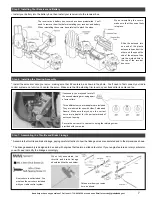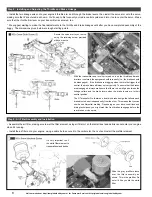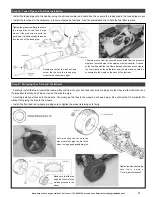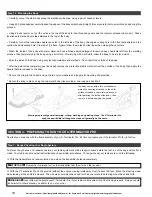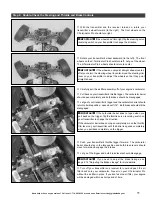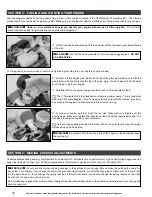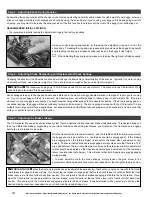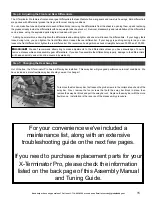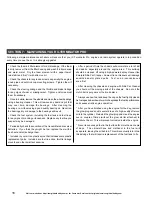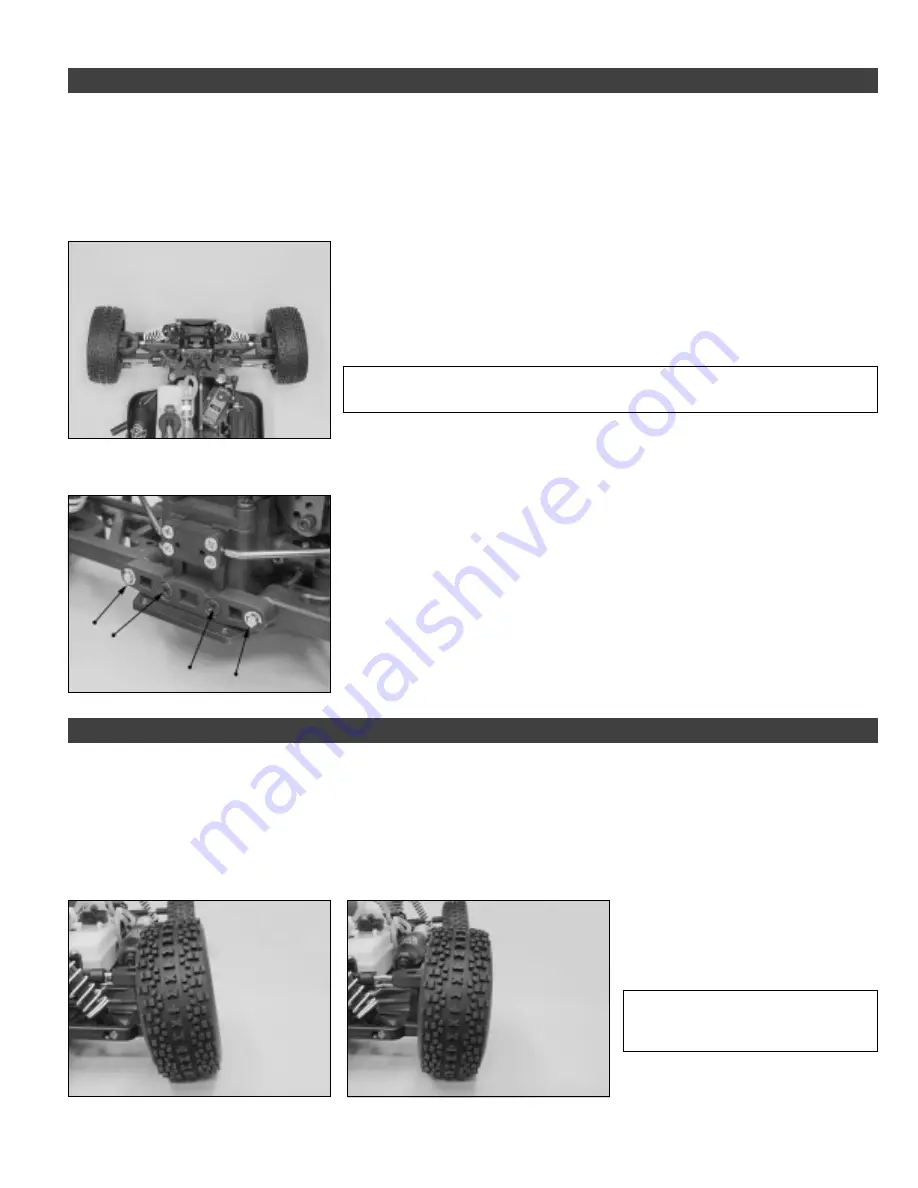
13
Need help or have any questions? Call us at 1-714-963-0329 or send us an Email at service@globalhobby.net
RECOMMENDED INITIAL SETTINGS:
●
0 degrees toe-in on the front and rear for overall best 4WD driveability on most surfaces.
☞
Adding more than 3 degrees of toe-in or toe-out will result in excessive loss of speed
and erratic handling.
✦
✦
✦
✦
✦
IMPORTANT
✦
✦
✦
✦
✦
For more precise toe-in adjustments, use the R.P.M. Toe-in Gauge
part # 708049.
The toe angle is the angle of both front tires (or rear tires) to each other, when viewed from above. Toe-in is when the front of both tires
point toward each other and toe-out is when the front of both tires point away from each other.
●
For the front tires, toe-in will make your buggy track straighter, but the steering will be more sensitive. Toe-out will desensitize the
steering, making your buggy a little more driver-friendly.
●
For the rear tires, if you're running on a smooth surface, we suggest no toe-in. If you are running on a rough surface, we suggest about
1 - 2 degrees of toe-in. This will give the rear end a little more "bite."
To adjust the toe-in on the rear tires, use one of the different composite toe angle blocks
provided in your kit to set the desired toe angle. For convenience, the degree of toe angle
in each block is molded into the back of the blocks.
To change the rear toe angle block, carefully remove the two C-Clips holding the rear
hinge pins in place. Next, remove the two screws that hold the toe angle block in place.
Replace the toe-angle block with the desired one. Installation is the reverse of the
disassembly procedure.
To adjust the toe-angle of the front tires, turn the tie-rods (steel rods connecting each wheel to the steering arm) in or out with an
adjustable wrench. To adjust the toe angle of the rear tires, you need to replace the toe angle block, using the reference below:
Step 1: Adjusting the Toe Angle
Camber is referred to as the amount of the tire's surface that contacts the ground. Tires that are exactly perpendicular to the ground
have 0 degrees of camber. If the top of the tire leans in toward the chassis, the tire has negative camber. If the top of the tire leans out
away from the chassis, the tire has positive camber.
RECOMMENDED INITIAL CAMBER SETTINGS:
●
For driving on smooth surfaces set both the front and back wheels at 0 degrees.
●
For driving on rough surfaces set the front wheels at -1 degree and the back wheels at -2 degrees.
Step 2: Adjusting the Camber Angle
Adjust the camber angle of the wheels by turning the upper turnbuckles in or out using an adjustable wrench.
☞
Camber settings should be measured
with the vehicle at its normal ride height.
✦
✦
✦
✦
✦
IMPORTANT
✦
✦
✦
✦
✦
For more precise
camber adjustments, use the R.P.M.
Precision Camber Gauge part # 708099.
Negative Camber
Positive Camber
Toe Angle Exaggerated for
Photo Clarity
Negative Camber
Exaggerated for
Photo Clarity
Positive Camber
Exaggerated for
Photo Clarity

